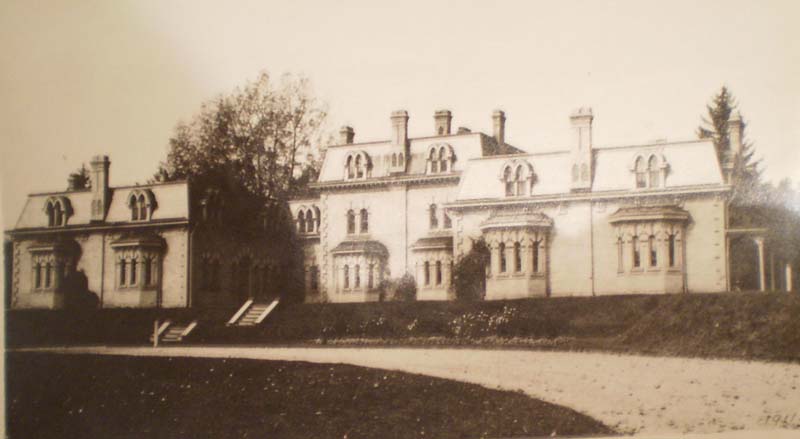The Cottages

The North Cottage, 1911.
Both Dr. Henry Landor and Dr. R.M. Bucke believed a collection of smaller buildings would
benefit the health of the patients. RMHCL
Introduction | The Main Building |
The Cottages
The Medical Examination Building |
The North Building
Cottages were built on the asylum grounds for chronic patients who were thought to be quiet and well-behaved, and patients about to be discharged. Physicians believed that providing them with more independent living situations would enhance their quality of life and create extra space in the main building for new patients. Superintendents at the LAI were encouraged by this treatment alternative, because it provided a domestic setting for long-term patients and helped to give them a sense of liberty. These patients were allowed much more freedom in moving between the Asylum buildings. Dr. Hentry Landor particularly liked the fact that it was very different from a more institutional setting, something he aimed to move away from while he was superintendent.
The first cottage was built in 1873 in the Gothic revival style and featured pointed arches, decorative castellation and large bay windows. The cottage consisted of separate, but connected, 2- and 3- story buildings. It offered 4 sitting rooms and 1 kitchen for its 30 patients, though patients continued to have dinner in the main dining room. This gave them the opportunity to interact with those living in the main building.
The English cottage system proved so successful that Dr. Landor quickly asked for two more cottages to be built, and they opened in 1876. By 1879, there were a total of 180 patients living in the three cottages (North, West, and East). The cottage system was not used extensively in North America at this time, but Dr. R. Maurice Bucke advocated that smaller buildings were easier to run, more comfortable for patients and encouraged individualized health care. The cottage system would spring up in other Ontario asylums by the early 20th century, including at Hamilton, Toronto and Mimico, and was often seen by asylum doctors as a step forward in providing the best patient care possible.